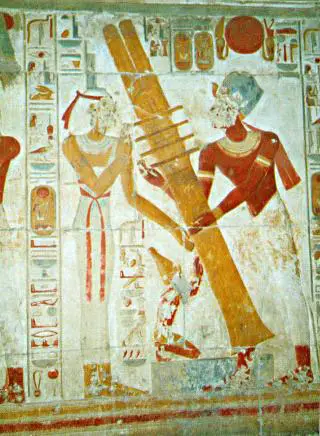In ancient Egypt, a certain concept appears again and again in ancient religious cults as “the World-axis”. There were several traditions in the Egyptian culture along with other simultaneous cultures that refer to it as a certain column. This column was often in an ancient temple where it represents the world Ancient Egypt Axis in cultic form.
World-axis was originally connected from cosmology to astronomy with the ancient religious doctrines about the stars. The “World-Axis” is often referred to as the “Tree of Life” in the ancient Egyptian texts. It was the trunk of the Tree of Life that represented the World Pillar or Axis Munde (literally “Axis of the Mound”). This World Pillar was believed to be the center of the universe around which the heavens appeared to revolve.
The Osiris Legend and the Tree of Life (the Axis Munde)

The Axis mundi legend in Egypt has many versions. The core story remains the basic fight between good and evil. This legend shaped the Egyptian religion in many ways. The pharaohs are supposed to be the incarnations of Osiris and tried to act just and humble. The deification of Pharaoh comes from this legend.
Pharaoh Osiris was the first ruler of unified Egypt. He was just and powerful. He had a wife named Isis and his brother was Set. Set craved the throne and Isis . He planned to kill Osiris for the Throne.
One evening Set came to Osiris and challenged him to play a game that would decide who is more powerful. Osiris was intoxicated at that time so without thinking he agreed to play the game. Set brought a beautifully carved coffer. The challenge was that whosoever will stay the longest in that coffer will be more powerful.

Osiris was tricked and when he bent over to see the coffer, Set pushed him inside. He sealed it with molten lead and chains. Set threw the box into the Nile. Osiris died but the box got stuck in the branches of Tamarisk tree. The coffer got embedded within the tree in time. This tree is thus considered to be the Tree of life. This tree of life grew out in sacred mound which is perceived to be the ‘Axis mundi’.
Other versions
In ancient Egypt, Giza was associated with the most secret part of the perceived underworld. This was because of the belief that through Giza the soul of the deceased was expected to pass in order to achieve Ascension under the guardianship of Sokar. Ancient Rostau translates as ‘mouth of the passages’ about Giza. In ancient texts, Rostau was intrinsically linked with the Mound of Creation. This signified that the Ancient Egyptians saw Giza as an “Axis-Munde” of the physical world.
The Incas saw Cuzco as the center of the world, “the axis-munde”, which was linked to the sky-world via points of access on the Milky Way when it rose up from the horizon at the time of the solstices. It was just like the view at Newark’s Great Circle.
The World-axis in Egyptian culture was connecting to sky-cultic rituals: the World Ancient Egypt Axis or the World Tree was seen in the form of a certain pillar or post -and was to be found in some of the ancient temples and sanctuaries.